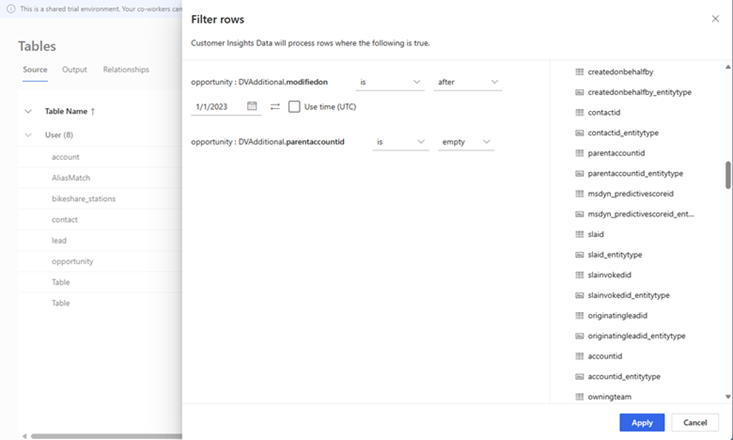Filter rows and columns from source data for better processing
Important
Some of the functionality described in this release plan has not been released. Delivery timelines may change and projected functionality may not be released (see Microsoft policy). Learn more: What's new and planned
| Enabled for | Public preview | General availability |
|---|---|---|
| Admins, makers, marketers, or analysts, automatically | Nov 2024 | Feb 2025 |
Business value
Improve the quality of your unified customer profiles and insights by filtering out unwanted rows and unnecessary columns from your source data directly in Customer Insights - Data. Removing old or incomplete data and eliminating columns that don’t provide value allow Customer Insights - Data to create higher quality insights in less time.
Feature details
A common challenge when working with customer source data is dealing with unwanted rows or columns, which increases processing time and storage in Customer Insights - Data. Preprocessing this data can be time-consuming and resource-intensive.
Now, Customer Insights - Data allows you to apply row and column filters directly to any source table you ingest, reducing the data scope to just what you need. Filters are applied once on the Tables page, where source tables are separated from output. Select the row or column filter link for any table and set the filters. These filtered tables will then be used across all processes in Customer Insights - Data, including unification, segments, measures, activities, and predictive models.
This feature offers several key benefits:
- Improved processing time: By removing unwanted rows, the system no longer processes data that isn’t needed, reducing time and resources.
- Streamlined data sets: Removing unnecessary columns improves processing time, particularly with large data sets. Columns that aren’t used for matching or needed in the final output can now be filtered out before processing.
- Targeted final output: Filtering out irrelevant data, such as old records or data from regions where you don’t operate anymore, results in a more focused and relevant output.
By using filters effectively, you can optimize both processing time and storage, making your results more targeted and efficient.
